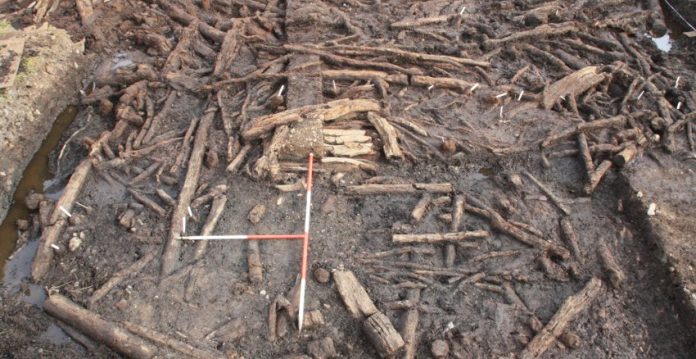In 2006, following the Edinburgh meeting of the Wetland Archaeology Research Programme (WARP), Historic Scotland commissioned a review of the archaeology of Scotland’s wetlands. The resulting report highlighted the international importance of settlement in Scotland’s lochs, bogs and mires, but also drew attention to how little was known about this aspect of the UK’s archaeological record. There are around 400 known crannogs, or artificial island settlements, in Scottish wetlands, yet they remain poorly understood in comparison to other site types.
Many of Scotland’s crannogs are known to date to the Iron Age, with a good proportion of those dated so far belonging to the mid-late first millennium BC. This is a problematic period in Scottish archaeology, since radiocarbon dating is inaccurate as a result of the flattened 14C calibration curve in the period 800-400 BC, often meaning that activity cannot be dated more closely than a century or two.

Wetland sites, however, often preserve structural timbers that can potentially be used to provide a dendrochronological date (derived from the alignment of tree-ring patterns with master sequences). Dendro is usually much more accurate than radiocarbon dating, and can often date the felling of a tree to a single calendar year. Crannogs, of course, are built predominantly in timber which is often preserved by wetland conditions, so the possibility existed to be able to be very precise with the date of occupation of these prehistoric settlements- something that has never been achieved in Scotland before.
Refining Chronological Resolution: a landscape approach
The breakthrough came at the crannog of Dorman’s Island, when the first prehistoric dendro date was obtained from split oak logs used as flooring on the island. This showed that that crannog was occupied between 153 and 121 BC and again in the sub-Roman period, but most crucially demonstrating that Galloway crannogs could be linked to Irish and northern English dendrochronological sequences………
Read the full article here on the AOC Archaeology website:
http://www.aocarchaeology.com/key-projects/wetlands/
The SWAP Programme is funded by Historic Environment Scotland.
- A monograph report on the Cults Landscape Project is now complete and in the final stages of preparation for publication.
- The excavations at Dorman’s Island crannog are reported in the Journal Of Wetland Archaeology, volume 10, 2011.
- Many of the themes of the SWAP programme are discussed in papers by Anne Crone and Graeme Cavers in Lake Dwellings After Munro: read the volume online for free, here.


